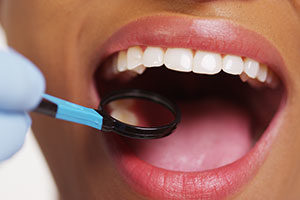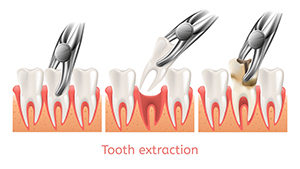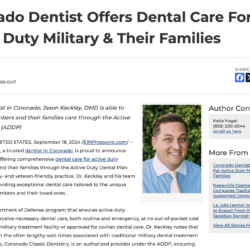Tooth Extractions
Tooth extractions can provide necessary relief to patients with a tooth affected by severe decay, injury, or crowding. These dental concerns often cause significant pain or discomfort to individuals and, in some cases, removing the affected tooth and potentially replacing it with a natural-looking restoration can be vital to your oral and overall health. While our experienced dentist, Jason Keckley, DMD, will consider a range of other restorative options before recommending an extraction, our practice can utilize advanced dental techniques to ensure your treatment is as easy and comfortable as possible. Dr. Keckley is also skilled in sedation dentistry and offers many options which can alleviate patient anxiety and apprehension about the tooth extraction procedure.
- Tooth Extraction Process
- Tooth Extraction Pain
- Post Extraction Instructions
- Stages of Healing After Tooth Extraction
- Tooth Extraction Cost
- Additional Tooth Extraction FAQs
What Happens During the Tooth Extraction Process?
 Before considering a tooth extraction, Dr. Keckley will perform a thorough analysis of your dental concerns and look to an array of other options to restore tooth health. This can include root canal therapy, a procedure designed to effectively prolong the life of a tooth affected by damage or decay. However, when a root canal will no longer benefit the problem tooth, Dr. Keckley will discuss the expectations and goals of a tooth extraction procedure. He will also take your unique needs and concerns into account before determining the most comfortable and effective approach that can provide optimal results.
Before considering a tooth extraction, Dr. Keckley will perform a thorough analysis of your dental concerns and look to an array of other options to restore tooth health. This can include root canal therapy, a procedure designed to effectively prolong the life of a tooth affected by damage or decay. However, when a root canal will no longer benefit the problem tooth, Dr. Keckley will discuss the expectations and goals of a tooth extraction procedure. He will also take your unique needs and concerns into account before determining the most comfortable and effective approach that can provide optimal results.
Once the tooth is safely removed, Dr. Keckley can present many replacement options to fill the empty space and prevent infections from forming. Dental implants and dental bridges are durable, custom restorations that look and feel like natural teeth. Because they are placed where the unhealthy tooth used to be, they can provide a long-lasting, effective replacement without interfering with eating, smiling, or speaking. Depending on your dental needs and cosmetic desires, Dr. Keckley can work with you to determine which option will provide the ideal outcome.
How Painful Is the Tooth Extraction Procedure?
Dr. Keckley will work to ensure your tooth extraction procedure is as pain-free as possible. Depending on your needs and desires, he can combine local anesthetic with sedation techniques for optimal comfort. To help manage any post-procedure discomfort, you will be provided with detailed instructions on how to care for yourself most effectively after extraction. You may be prescribed pain medication to help control discomfort initially, or you may prefer only to use over-the-counter pain relievers. Icing and keeping the head elevated are also key for reducing discomfort related to swelling.
What Do I Do After My Tooth Is Extracted?
After extraction, Dr. Keckley will provide you with specific instructions to facilitate the healing of your gum tissue. Generally, you will want to take care to limit yourself to a soft diet for the first 24 hours after treatment, avoiding consumption of food or drink that is very hot, tough, or sticky. We also advise patients to abstain from smoking or drinking for at least the first day following the procedure. While you may be advised to avoid the affected area during your daily oral hygiene habits, you should be able to brush and floss the area normally again after the first 24 hours.
What Are the Healing Stages of a Tooth Extraction?
Within the first 24-hours of your tooth extraction, the empty socket should stop bleeding and form a blood clot. The platelets in the blood clot create a semi-solid mass held together by a fibrin matrix. Other cells in the blood are then attracted to the site and initiate the wound healing process within the socket.
During the first and second week of healing, the condition of the gum tissue around the extraction site should improve rather quickly, and the diameter of the extraction site should shrink considerably. Ideally, the socket will fill with granulation tissue and develop blood vessels. Adult stem cells in the granulation tissue can then create networks of specialized cells that form various types of tissue. The rate of healing for larger adult molars or impacted teeth will take longer than the healing of a smaller, single-root adult tooth. Once there has been enough natural repair (usually after seven to ten days), any stitches can be removed if necessary (unless dissolvable stitches were used).
Within the third and fourth week after tooth extraction, the stem cells should replace much of the granulation tissue in the socket, turning into new bone tissue along the socket and new gum tissue along its surface. At around eight to ten weeks, bone tissue fills upward and inward from the walls of the socket as healing progresses until the socket is completely repaired and matured after approximately four months.
How Much Does Tooth Extraction Cost?
The cost of this procedure is largely determined by the details of your own unique treatment plan. During your consultation, Dr. Keckley will discuss the expectations of treatment with you to ensure you are thoroughly aware of the procedural details. You can feel confident that, prior to beginning treatment, you will know the full cost of services, including the amount covered by insurance. Our practice also offers an array of dental financing and payment options to accommodate patients, including acceptance of many major credit cards, cash, personal checks, PPO insurance plans, health savings accounts (HSA), and customized payment plans.
We also accept several forms of dental insurance and can always check to see if your dental plan is covered. Coronado Classic Dentistry is also proud to be an official VA Vendor, meaning if you are a military veteran and have been approved for off-base treatment, your care may be covered. To check if you are eligible, or for any other questions about our financing options, please don’t hesitate to call our practice and speak to a friendly member of our team today.
Additional Frequently Asked Questions (FAQs) About Tooth Extraction
Who are the candidates for a tooth extraction?
Patients with extensive tooth damage or decay, who cannot benefit from a root canal, are typically considered for an extraction. In addition, individuals with teeth that are extremely crowded may benefit from tooth removal, as well as patients whose molars are impacted or misaligned.
Why would a tooth need to be extracted?

When the amount of decay accumulated in a tooth is substantial, or when a tooth is severely injured beyond repair, extraction can be a good solution for your overall oral health. It is often very painful for individuals to have decayed or injured teeth, and also creates the possibility of further complications, such as oral infections, gum disease, and problems to surrounding teeth. Left untreated, an unhealthy tooth can also pose a risk to your overall health since oral health is inextricably linked to general wellness. A tooth extraction can reduce this threat, as well as provide relief from pain catalyzed by a decayed or damaged tooth.
How can sedation dentistry help make my treatment more comfortable?
Sedation dentistry utilizes advanced approaches to help dental treatments become a more relaxed and comfortable experience for patients. Whether the best method of sedation for your treatment involves nitrous oxide (more commonly known as “laughing gas”) or oral-conscious sedation, the state-of-the-art medicine and technology used during the procedure can ultimately help you feel more relaxed. If general anesthesia is administered, you will be completely asleep and should have no memory of the procedure. All methods can minimize patient discomfort, while alleviating anxiety and dental phobia.
What Should I Eat After Tooth Extraction?
Dr. Keckley recommends drinking lots of fluids to help you remain hydrated as you heal; however, please refrain from using a straw, as suction can dislodge the blood clot from the socket, creating unnecessary discomfort and interrupting the healing process. Soft nutritious foods—that are neither hot, spicy, nor acidic—are usually most agreeable within the first day or two of healing. Patients commonly enjoy yogurt, applesauce, smoothies, soup, mashed banana, and oatmeal, in addition to ice cream and milk shakes as a sweet, soothing treat. If healing is progressing normally, you may add in new foods as you see fit, but be cautious and gentle to avoid aggravating the extraction site. Depending on the intensity of your extraction procedure and personal rate of healing, you should be back to your normal diet in a week or less.
Are there potential complications associated with tooth extraction?
Although complications during an extraction are rare, like all treatments, there is a possibility of them occurring. If you have an adverse reaction to any medicine or experience pain or continued swelling after several days, please contact our practice immediately.
Why is it bad to smoke after a tooth extraction?
Smoking is not advised following a tooth extraction for two reasons. First, nicotine consumption impairs blood circulation and slows the healing process. Secondly, like sucking on a straw, smoking a cigarette, cigar, or pipe can dislodge the protective blood clot from the socket. The absence of this blood clot exposes the vulnerable tissues beneath, which can cause a more prolonged period of discomfort during healing. Additionally, the open wound may be more susceptible to infection.
How long does tooth extraction take?
The length of time your tooth extraction takes will depend on which tooth is being removed and the condition/health of the tooth. Molars typically take longer as they are larger teeth and have multiple roots. If a tooth is impacted, such as an impacted wisdom tooth, it will require a longer process to extract, as it must be removed from underneath the gum tissue and within the jawbone. Prior to your extraction, Dr. Keckley will tell you how long to expect your specific procedure to take.
How long do I keep gauze on after tooth extraction?
Gauze should remain over the treatment site until the bleeding has stopped. It may take up to three to four hours for the blood to clot within the socket. If the bleeding does not show signs of stopping within a reasonable amount of time, it is important to call our office right away.
What are the signs of an infection after tooth extraction?
Signs that your socket has become infected after a tooth extraction may include redness, swelling, and the appearance of discharge from the socket. These indicators may be accompanied by a fever, chills, nausea, and vomiting. Chest pains, coughing, and shortness of breath can also be symptoms of an infection. If think you have developed an infection, contact our office as soon as possible for an urgent care appointment.
When performed by a skilled dentist, tooth extractions can be an easy and comfortable way to restore oral health. For more information on tooth extractions, or to schedule a consultation, please don’t hesitate to contact our team today.


